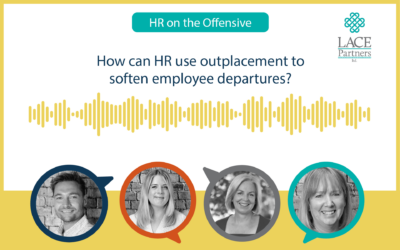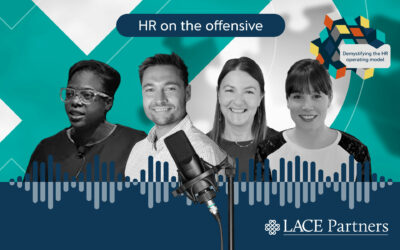In this week’s blog we speak to Matt Sturman, Senior Technical Consultant at AppLearn about the findings of their latest whitepaper; ‘Understanding Digital Adoption Analytics’. In our recent HR on the Offensive podcast we spoke to Matt (which you can listen to here). Read below to learn what trends have emerged and how digital adoption analytics plays such an important part in supporting the people strategy of businesses.
Tell us about your latest whitepaper; ‘Understanding Digital Adoption Analytics’
We were keen to understand and assess the impact the global pandemic had on people’s working environment and the knock-on effects on user experience, technology adoption and ROI. With ranging degrees of urgency many companies have taken on transformation projects during the pandemic; but many have found it difficult to measure progress. Why? And what role could a more effective adoption strategy play? To engage with this need for insight we commissioned The Everest Group to conduct research to uncover the key priorities for enterprises moving into the ‘next normal’. From the research we found that there has been a tangible shift in focus since before the pandemic, with businesses facing our new reality with a digital-first approach. As the line has been blurred between home life and work life over the last 18 months, so has arguably the line between employee and customer experience. Employees are increasingly expecting ‘consumer grade’ experiences from their work technology – especially as working from home and hybrid working has compounded our reliance on tech.
Six areas of innovation:
From the Everest Group research there were six areas of innovation identified as core strategic objectives for businesses: operational efficiency, employee/customer experience, customer acquisition, technology implementation, launch of new products and services, as well as revenue/pricing of existing services. These will come as no surprise to many HR teams embarking on a digital transformation, but in order to be successful in delivering in some, or all, of these objectives, organisations need to overcome challenges, such as:
- A lack of adoption and communication in embracing any new technology
- Software business cases not covered by post-launch reporting
- A complex organisation structure
- Narrow scope/focus of investments
- Lack of a proactively engaging culture and innovation
- Lack of/poor governance.
To overcome these challenges and become a ‘digital-first’ business accurate people data and analytical reporting is key. And where a digital adoption becomes more powerful is in collating the data you already have in your business across multiple platforms, into one simplified and easy to understand reporting function.
Where are you on your people data and analytics journey?
During the pandemic we have seen a large uptick in organisations looking to support the change to their business models (large scale remote working, etc.) through the implementation of new technology. In order to fully assess the operational efficiency of their technology, the type of data that is required will naturally evolve. For example, in a ‘pre-go-live’ we could be talking about data points focused on the consumption of change communication, trying to assess business-readiness for new tools or processes (i.e., looking at how people are engaging with those messages and the training at that stage). In a ‘go live’ state the metrics you are assessing shift towards benchmarking progress against key tasks, i.e., do we understand what completion of onboarding tasks looks like internally across different user communities? In a ‘post go live’ state the data that is most important is to address where employees are seeking support. Where do people need help and where are they struggling? There is a broad spectrum of data points that might exists across the different stages of transformation and therefore ensuring that you fully understand what you should be measuring at different stages of your software lifecycle is key. It’s not just about picking certain types of analytics once the new system is up. It needs to evolve as the business evolves and the software changes. It is not just one point in time either. We can’t just measure consumption and change up front and assume it will be okay, instead, we need to have that cyclical process of pre and post go-live stages. When a new element enters your business rosta, whether it is a tool or piece of software, the cycle repeats.
The three levels of analytics and why they are important
In the report we talk of three ‘levels’ and these levels relate to the stakeholders within a business and how they are interacting with the data and analytics they have available.
Tactical data analytics
This appeals to application stakeholders and process owners who want to understand the performance and pain points of new systems or tasks. They are looking to understand areas of friction within their organisation. For instance, where employees are struggling within a workflow and failures are occurring, at a tactical level you are trying to understand where you can improve productivity or experience. A good example of this is how at AppLearn we worked with Nissan to create a change job function within their HCM platform, and by learning about their user engagement we could flag that a task was taking a lot of time to complete compared to what was normally expected. When we used our analytics platform to benchmark other systems that were running well, then we were able to apply those principles to reduce the time taken to complete the change job function task by 45%. Big efficiency gains on one high-priority process.
Strategic data analytics
This will focus more on the senior management team who want to see to the outcomes of their digital transformation efforts. Whilst at the tactical level you are looking at those people who are owning different processes (performance management, recruitment, etc) and how to make their tasks more efficient, here we are looking at group-wide data, so we could be talking about looking at processes across different regions for a global enterprise. We have worked with Rolls Royce and by tracking their user engagement across not just one tool/systems, but multiple in the business, we have seen users following non-compliant paths to complete activities. The result of tracking that across multiple systems was that we were able to see that from a company-wide perspective there were up to 32,000 worth of hours that could be saved by focusing in on task completion times and the users end-to-end journey. If you are able to leverage a DAP platform effectively, you are able to scan across those multiple systems your business has, acting as an ‘experience layer’ in analysing the data across all of the platforms you have.
Financial data analytics
The focus here is on looking to understand ROI, cost reduction across the digital transformation. When you undertake a transformation programme you start off with the goal of delivering value back to the business and so here the measurement is focused on some form of objectives and key results. This is what ‘moves the needle’ for these organisations. Having an understanding of where an organisation wants to deliver the cost efficiencies at the earliest possible stage enables you to be pre-emptive in terms of the business’ needs and you can start to spot trends in your data and prioritise key outcomes that the business views as critical.
Diagnose and discover, analyse, monitor and improve
AppLearn’s approach to working with any organisation is to take on the role of trying to be an intelligent, pre-emptive platform and these three key areas are how we work with businesses to deliver value. In order to diagnose and discover issues you need to have to understand any processes challenges that exist across the whole business. Asking the question “do we understand how we are operating today and how do we discover optimal process paths and pain points in our business?”. Using all of that data and intel helps to shape your support strategy i.e. are people following compliant paths? Do we understand where people are struggling and dropping out of a system? When you have that diagnosis you can start to analysing your impact. That is where you are understanding usage of training and support content delivered by the DAP platform you have. Are there any points of failure? Are there any actionable recommendations that can be taken from the fact people are leveraging content in different areas of the business? Finally, you monitor and improve. Solution design should be informed and driven by data. It should help track and monitor your key business outcomes and help you to make the interventions and make incremental optimisation in your system. It is that monitoring and improvements that lead to the efficiency gains, improving that overall user experience and helping you to monitor the wider trends over time like adoption rate of any new system, or how IT literate your employees are. If you would like to talk about how digital adoption platform data and analytics can have a tangible impact on supporting your business, you can contact us today, or reach out to Matt at AppLearn directly.









